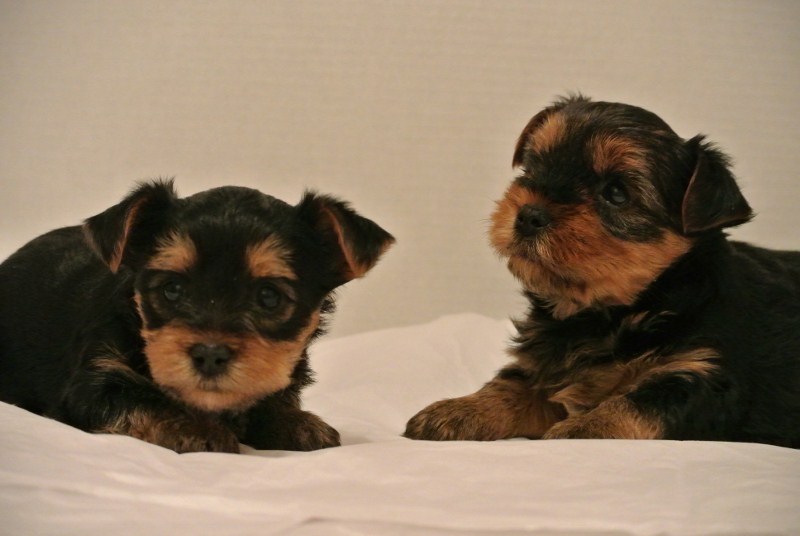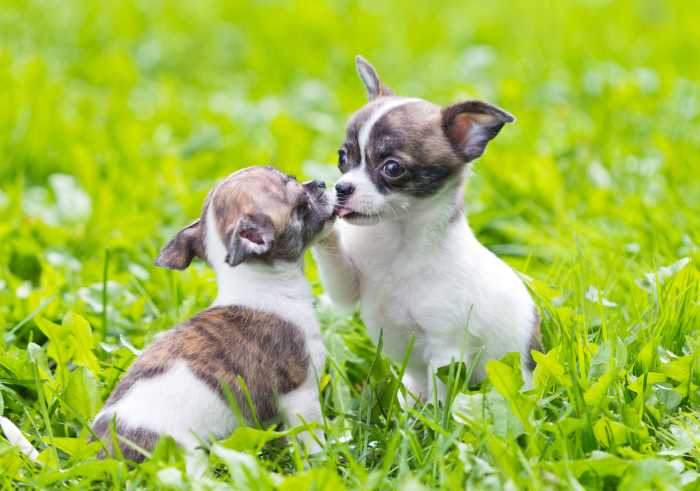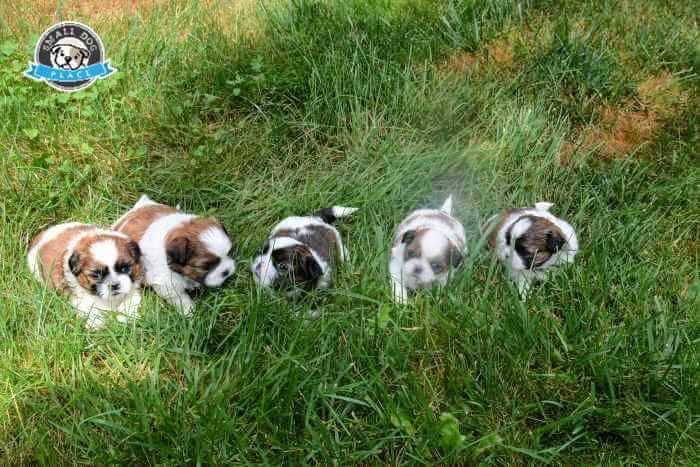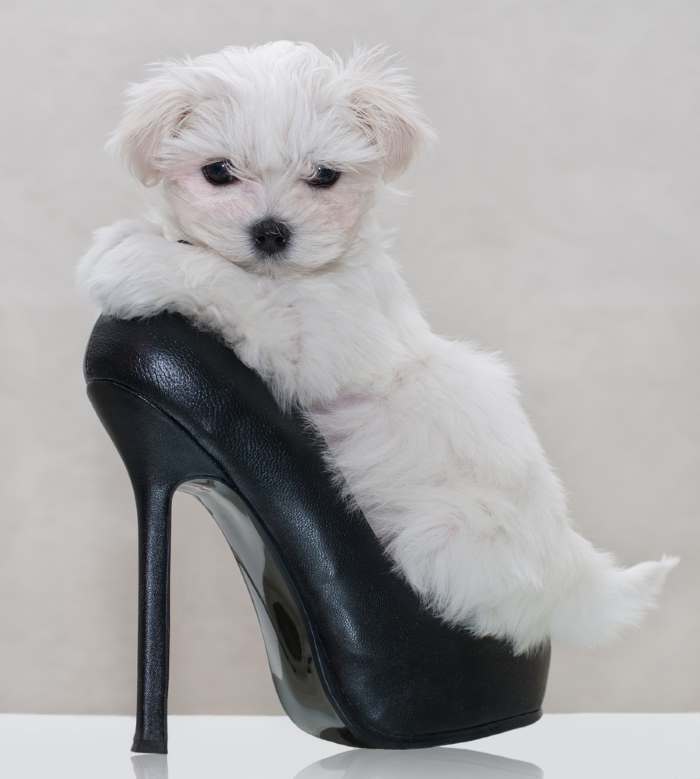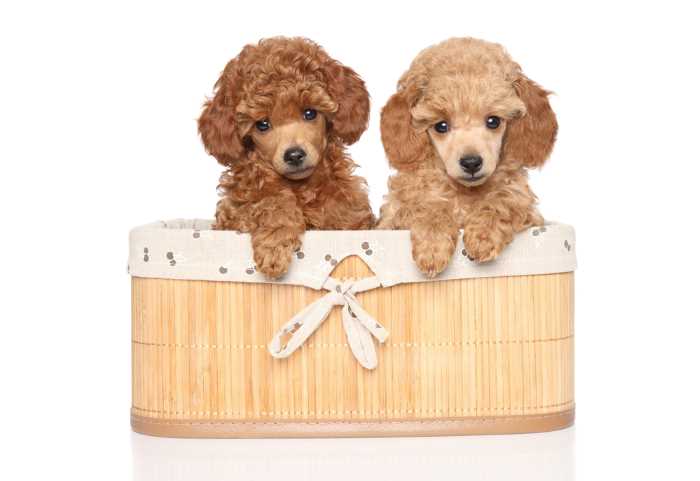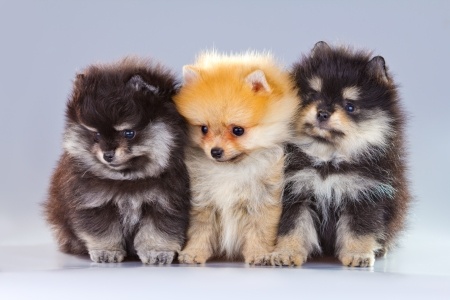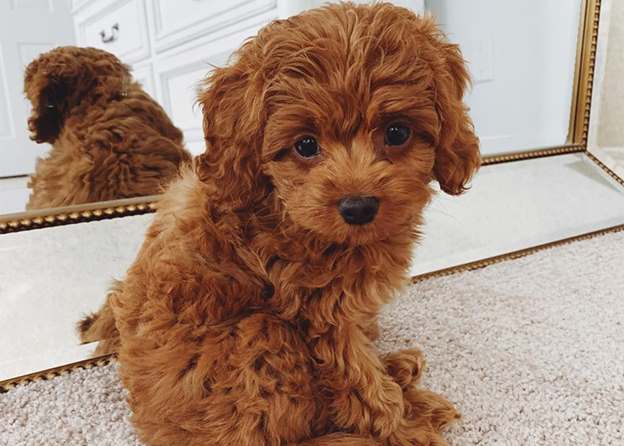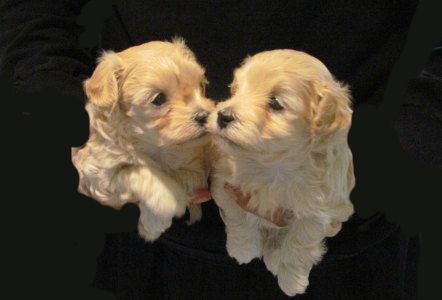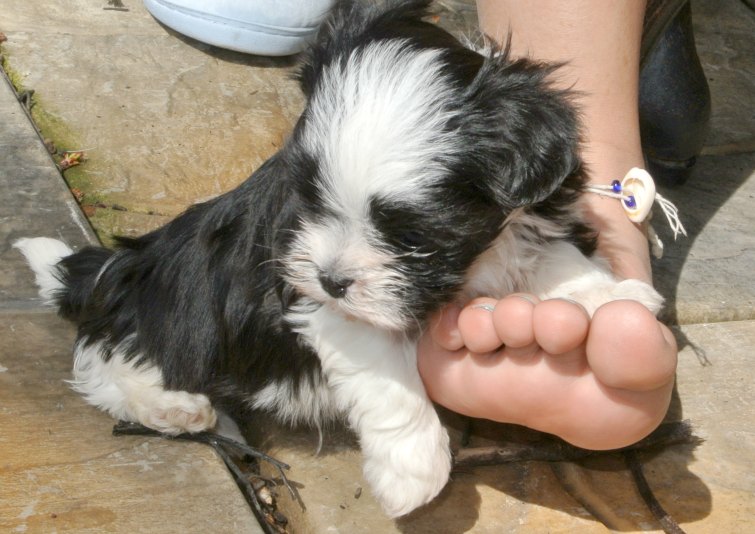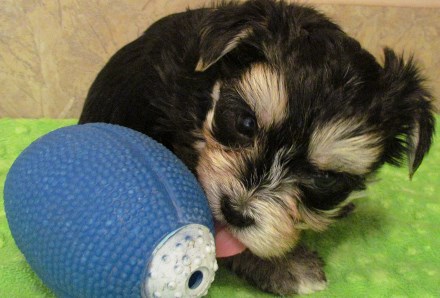- Small Dog Place Home
- Teacup Puppies
The Teacup Puppy: What it is?
Pros and Cons of Tiny Puppies
Teacup Puppy by Janice |Updated 01-12-2024
There's no denying that a small teacup puppy has a cuteness factor that can overpower even the cutest dog breeds, large or small. And something must be said about holding a tiny dog in one hand. But beyond adorable, is a little teacup puppy a good choice for your new best friend?
Teacup puppies, pocket-sized or miniature dogs, have become increasingly popular. These tiny breeds, such as the Yorkshire Terrier, Chihuahua, Maltese, and Pomeranian, have captured the hearts of dog lovers worldwide. But how did these petite pups come into existence?
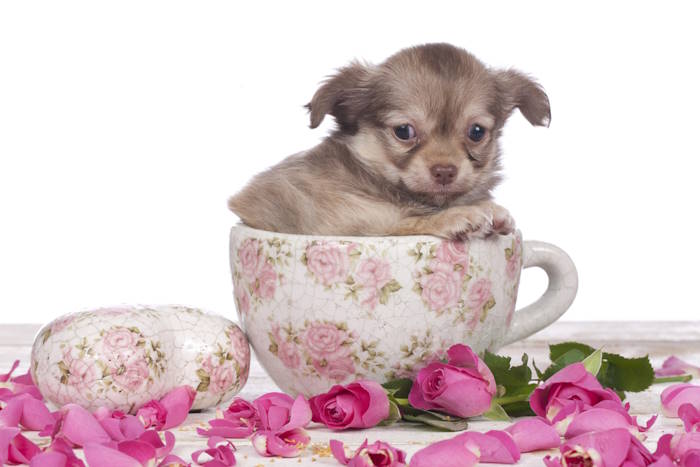
Table of Contents
Origins of Small Dogs
What is a Teacup Puppy
Needs of Teacup Puppies
Grooming
Training
Safety
Types of Teacup Dogs
Runts of the Litter vs. Teacups: Is there any difference?
Health Problems of Tiny Dogs
My personal experience with my "teacup" puppy
How Much do Teacup puppies cost?
The life span of small dogs
Do they Stay Small?
Pros and Cons
Avoid Scams
The Origins of Teacup Puppies
The origins of teacup puppies trace back to the deliberate breeding of small dogs throughout history.
For example, the Yorkshire Terrier, originating in 19th century England, was bred by crossing various small dog breeds, including the English Black and Tan Terrier, to create a compact yet elegant companion.
Similarly, the Chihuahua has ancient roots in Mexico and is believed to have been selectively bred for its diminutive size by the ancient civilizations of Mexico, specifically the Toltecs, centuries ago.
Some sources suggest that the dog (canine) has a "slippery genome," which explains how certain species can experience faster mutation rates and greater genetic diversity than others.
This theory suggests that the species in question can allow rapid adaption. The miniaturization of dogs does not fit this explanation.
Some examples in the scientific literature follow this "slippery genome" explanation, including viruses but not dogs. (Please see the reference section at the end of the article for more information.
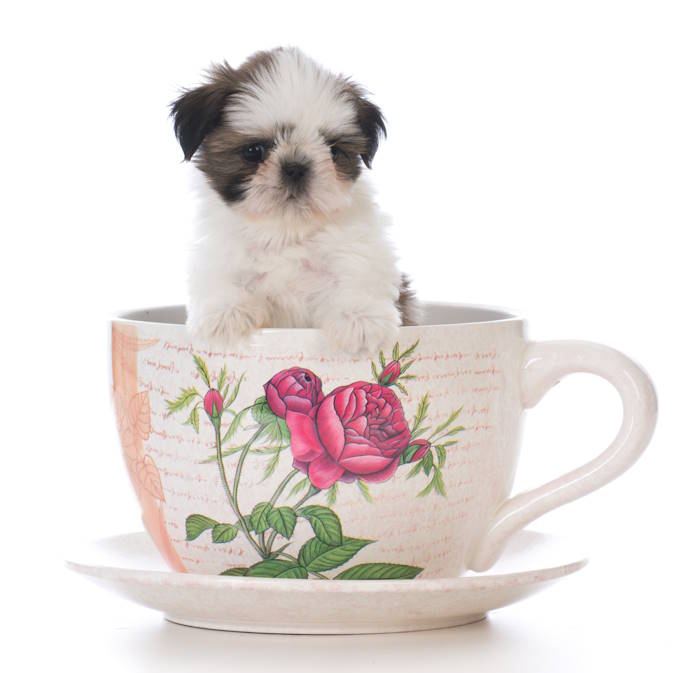
While many dog enthusiasts adore teacup puppies for their cute and cuddly appearance, it's important to note that the breeding practices to achieve such small sizes have raised concerns about the ethical treatment of these dogs.
Some breeders prioritize size over health, resulting in increased susceptibility to various health issues.
Potential teacup puppy owners must research and choose responsible breeders who prioritize their puppies' overall health and well-being.
By understanding the origins and potential challenges associated with teacup puppies, one can decide whether owning one of these small breeds is the right choice.
What is a Teacup Puppy?
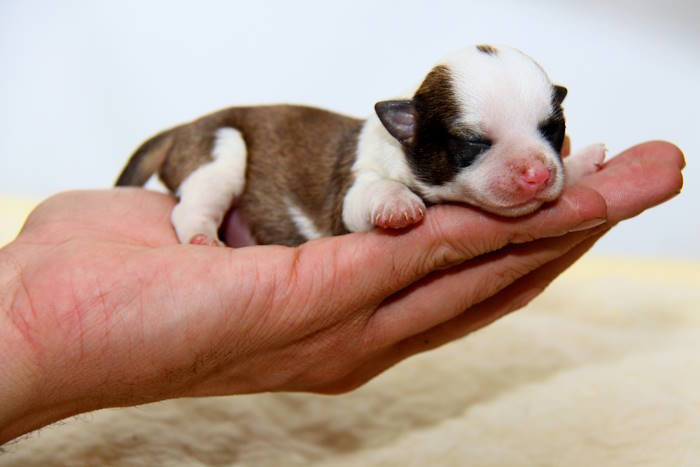
You may be surprised that Teacup Puppy has no official breed, even though puppy buyers who want a smaller-than-normal puppy would argue otherwise.
Teacup is a term often used by some breeders to describe tiny versions of existing breeds, but it is not a recognized classification by significant kennel clubs or breed standards.
The term teacup puppy" is usually an advertising gimmick to try and sell smaller than standard-size puppies at a premium price.
The teacup dog industry is booming, and even the most responsible breeder may be tempted to jump on the bandwagon, but many come from unscrupulous breeders.
Needs of Teacup Puppy Breeds
Tiny dogs have unique grooming, training and safety requirements due to their diminutive size.
Grooming
When it comes to grooming, these small breeds often have delicate skin and plush coats that need regular maintenance to avoid matting and skin issues.
Frequent but gentle brushing should be part of their grooming routine to distribute essential oils through their coat, keeping it soft and shiny. Regular baths with the right pH-balanced dog shampoo are also crucial to keep their skin healthy and clean, while nail trimming and dental care must be handled with care due to their delicate size.
Training
As for training, these tiny dogs sometimes develop a 'small dog syndrome', where they become overly assertive or spoiled, puzzlingly forgetting their size!
Thus early training based on positive reinforcement is necessary to curb any unwanted behaviors, including excessive barking, nipping, or stubbornness.
Also, their small size and possible fragility require owners to be cautious during training sessions, ensuring the exercises or commands don't physically strain or harm them.
Safety
- It goes without saying that safety must be a priority if you own one of these little dogs. Since they don't seem to comprehend how small they are, they tend to pick fights with much larger dogs which can result in disaster.
- Jumping off furniture should be discouraged. Use a dog stairs or ramp instead.
- Some love to chase at full speed around the house. This is good exercise, but they often don't know how to put on the breaks and will collide with a wall or large piece of furniture.
- To advoid respiratory problems, it's a good idea to use a well fitted harness rather than a collar when taking a walk.
Overview of Teacup Puppy Breeds
Many of the toy breeds we know today were once much larger, but through rigorous breeding practices, the dog's height was slowly reduced, and as long as sound breeding practices are undertaken, this can be a safe process. Here are some of the more common "teacup dogs."
Teacup Yorkies
The Yorkshire Terrier, often called a "Yorkie," is a small and glamorous dog breed known for its luxurious coat and confident personality.
They typically stand at a height of 7 to 8 inches and weigh between 4 to 7 pounds. Despite their small size, Yorkies possess a mighty temperament.
They are energetic, intelligent, and brave little dogs. Yorkies are known for their big personalities and are often described as feisty, affectionate, and fiercely loyal to their owners.
While they may be small, they have a strong sense of self-importance and are not afraid to assert themselves when needed.
With their alert and lively nature, Yorkies make excellent companions for individuals and families who appreciate their dynamic and loving personalities.
Teacup Chihuahuas
The Chihuahua is a small and vivacious dog breed known for its petite size and bold personality. They typically stand at a height of 6 to 9 inches and weigh between 2 to 6 pounds.
Despite their tiny stature, Chihuahuas possess a larger-than-life temperament. They are known for their confidence, courage, and feisty nature.
Chihuahuas are loyal and protective of their owners, often forming strong bonds with them. While they can be wary of strangers, they are fiercely loyal and affectionate toward their families.
With their lively and spirited demeanor, Chihuahuas make entertaining and devoted companions for individuals and families who appreciate their unique charm.
Teacup Shih Tzu
The Shih Tzu is a small, delightful dog breed known for its charming personality and luxurious coat. They typically stand about 9 to 10 inches and weigh between 9 to 16 pounds.
Despite their small size, Shih Tzu have a big and confident personality. They are friendly and affectionate and love being the center of attention. Shih Tzu are known for their playful nature and get along well with children and other pets.
They are gentle and calm, making them excellent companions for individuals and families. With their loyal and loving temperament, Shih Tzu bring joy and happiness to their owners' lives.
Teacup Maltese
The Maltese breed is a small, elegant dog with a gentle and affectionate temperament. These adorable dogs typically stand around 8 to 10 inches tall and weigh between 4 and 7 pounds.
Despite their size, Maltese dogs have a confident and playful nature. They are known for their sociability and love being the center of attention.
Maltese dogs are often described as friendly, outgoing, and eager to please their owners. They form strong bonds with their families and are known to be excellent companions.
With their charming personalities and compact size, Maltese dogs make wonderful pets for individuals and families of all ages.
Teacup Poodle
Toy Poodles are an enchanting breed known for their small size and charismatic personality. Standing around 10 inches tall at the shoulder, these compact dogs are the miniature version of the Standard Poodle.
Despite their small stature, Toy Poodles possess a big personality. They are intelligent, energetic, and eager to please, making them quick learners and excellent companions.
Toy Poodles are often friendly and affectionate towards their owners, and their playful nature ensures that they bring joy and entertainment to any household. Their size makes them suitable for apartment living, as they can adapt well to smaller spaces.
Teacup Pomeranians
The Pomeranian breed is a petite yet lively dog known for its abundant fluffy coat and spirited personality. The Pomeranian is a small-sized breed with an average height of 6 to 7 inches and weighing between 3 to 7 pounds.
However, don't let their size fool you! These tiny dogs have larger-than-life personalities. Pomeranians are often described as confident, curious, and feisty.
They are lively and outgoing, ready to explore their surroundings and interact with their human companions. Despite their small size, Pomeranians are known for their alertness and can make excellent watchdogs.
Their affectionate nature and eagerness to please make them delightful companions for families and individuals alike.
Hybrid Breeds
Purebred dogs are not the only teacup varieties. Small dogs can be downsized to create the "perfect teacup puppy."
Poochon (Poodle and Bichon Frise Hybrid)
Maltipoo (Maltese and Toy Poodle)
Malshi (Maltese and Shih Tzu)
Morkie (Yorkshire Terrier and Maltese)
Yorkie Poo (Yorkshire Terrier & Poodle)
Yorkipoo (Hybrid: Yorkshire Terrier and Toy Poodle)
Pomsky
Pomsky (Siberian Husky and Pomeranian)
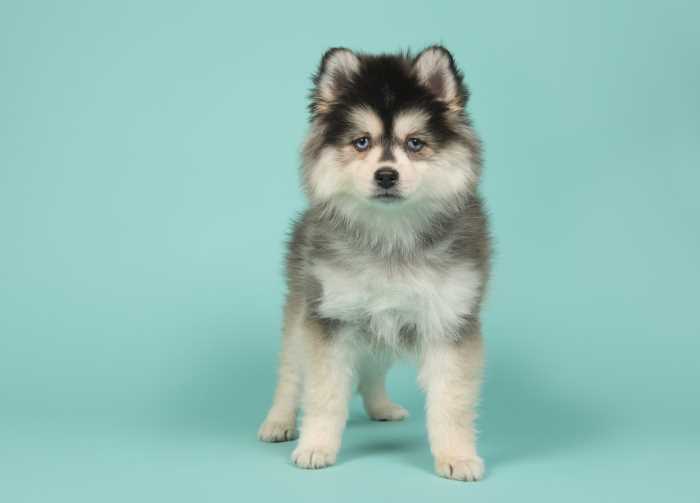 Pomsky
PomskyTeddy Bear, Shichon, Zuchon
Teddy Bear (Shih Tzu and Bichon Frise)
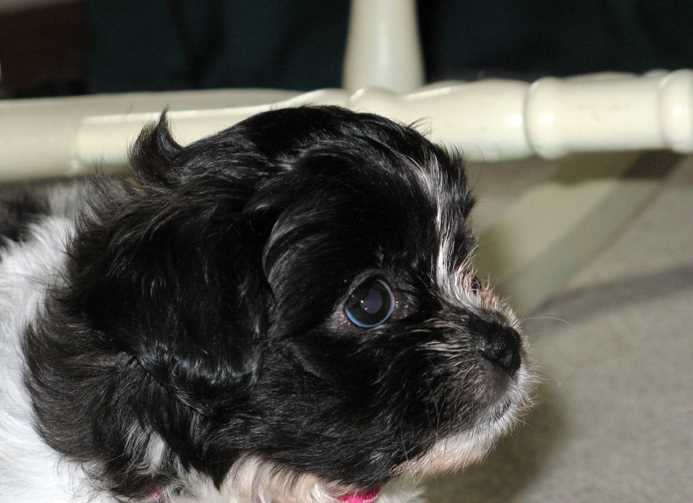 flickr.com/photos/82725508@N02/7579982814
flickr.com/photos/82725508@N02/7579982814What is the Difference Between a Teacup Puppy and a Runt?
Since there is no veterinary medical definition of either, we must rely on what is generally accepted by laypeople. We've already established that teacup puppies are smaller than the breed standard and sometimes much smaller.
A runt puppy is generally considered to be smaller than its siblings. Sometimes, there can be one or more runts; in other litters, most puppies are within a few ounces of each other in size.
A puppy buyer who doesn't visit the litter in person is not likely to know whether the puppy they are buying is coming from a litter of all smaller puppies or is the runt of the litter with larger siblings.
Problems with Runts
A runt may appear to be a teacup puppy, but in reality, a runt comes into this world at a disadvantage.
Even before birth, there is competition to find the most advantageous location within the uterus to implant. A poor place can mean the puppy lacks the nutrition before birth.
It is thought that puppies that implant closest to the ovary have more nutrients than those that implant in the center, but this has never been scientifically proven in canines. It does happen in mice, though.
After birth, these puppies may be weaker or sicker and have an even harder time competing for mama's milk and warmth.
The larger puppies in the litter are more robust and have less difficulty locating the warmest place or the teat with the most milk. In a 2006 study, "Role of puppy behavior in the weaning process" (Foyer et al. 2016), it was found that larger canine neonates tend to monopolize the most productive nipples of the mother, preventing smaller siblings from obtaining the same level of nutrition.
While this doesn't specifically cite the location within the uterine horns, it indirectly supports the notion that pre-birth factors (like intrauterine positioning leading to differences in birth weights and sizes) can significantly influence post-birth nutrition access and needs among puppies.
Many runts do not survive even with human intervention. It is most important for the breeder to be aware of this, offer supplement feedings, and help the smaller, weaker pups nurse uninterrupted as often as possible and obtain proper nutrition.
Health Problems Associated With Smaller Puppies: Runts and Teacup Puppies
Several scientific studies have indicated that teacups or tiny dog breeds are more susceptible to certain health problems due to their small size. These health issues include:
1. Dental Problems: Tiny dogs have small mouths, which can lead to crowded and misaligned teeth, making them more susceptible to dental disease, including tartar buildup. (Asher et al., 2009).
2. Orthopedic Issues: These breeds often suffer from orthopedic issues, such as patellar luxation and hip dysplasia, due to their small skeletal structure and fragile bones. (Harasen, 2006).
3. Cardiovascular Issues: Some tiny breeds, like the Chihuahua, are prone to heart problems, heart murmurs, and congestive heart failure (Detweiler & Patterson, 1965).
4. Tracheal Collapse: Small dog breeds like Yorkies, Pomeranians, and Chihuahuas are more prone to tracheal collapse, which leads to coughing and respiratory problems (Johnson, 1966).
5. Hypoglycemia: (Low Blood Sugar) Tiny dogs tend to have lower sugar reserves and may be prone to bouts of hypoglycemia, especially when stressed or after excessive exercise (Bosje et al., 1998).
6. Skin Issues: They often have skin issues, including allergies and dermatitis, partly due to a high skin surface area to body volume ratio (Jacobs et al., 2018).
All these studies underline the importance of regular veterinary checks and specific care and attention to the needs of small dog breeds.
My Personal Experiences With a Teacup Puppy
In my personal experience as a breeder, I encountered a tiny Shih Tzu dog who currently weighs less than 4 pounds. He's nine years old as of the writing of this article and doing well, but he is not without his list of troubles.
You may have met him on my "about me," page. He's the guy sitting on my desk.
He was taken out of the gene pool very early on. Some of his problems were extremely odd and rare, according to my veterinarian at the Boston Heights Veterinary Hospital.
For example, both ear flaps broke off, not at the same time, but it freaked me out and all the employees at the hospital.
The first ear flap tore and fell off in my hands while I groomed him, and then later on, the same thing happened to the groomer working on him at the vet clinic.
The only explanation the vet could offer was insufficient blood supply to the ears.
He also has lost both femoral heads due to surgery as a result of hip problems.
How Much Does the Teacup Puppy Cost
Expect to pay higher than average costs for a teacup puppy. Depending on whether you work with a breeder or a broker, expect to pay upwards of $3000 and often more for these smaller-sized dogs. Commercial breeding facilities often produce many hybrids, such as those listed above (Morkies, Teddy Bears, Pomskys, Yorkie Poos, Malshis, and Maltipoos).
These facilities will sell their puppies to Pet Stores directly or through a broker. Some of the most expensive teacup puppies are often found at pet stores for much more money than they are worth.
At the far end of the spectrum, Paris Hilton paid $13,000 for a Pomeranian weighing only 12 ounces.
How Long do Teacup Puppies Live
There is a wide chasm when it comes to opinions of the lifespans of teacup puppies. One one end of the spectrum, it is true that small breed dogs live longer than their larger or giant cousins. The American Kennel Club, for example, reports that the typical lifespan of a Yorkshire Terrier is 11-15 years whereas the Great Dane is expected to live 7 to 10 years.
If smaller means a longer life span, then it would be reasonable to assume that teacup puppies would have a long life span. But is it true?
Many tiny dogs live a long, healthy life, but not all, and many of those whose life spans are cut short die from issues that arise from their small size. I'll discuss health in just a moment.
Do Advertised "Teacup Puppies" Stay Small?
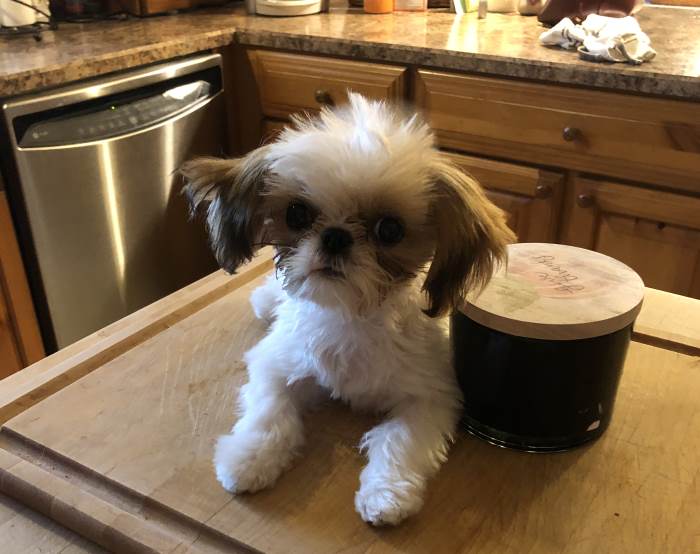
There are no hard and fast rules for this question. Some stay small for their entire life, but just as many catch up to their normal weight with time.
If you chart the growth weight of puppies, you will see that low-birth-weight puppies grow more slowly than their litter mates.
This is typical across breeds for the runt, who remained small at birth. But the opposite can also be stated for runt puppies.
Once given the right nutrition that runts may not have received in utero due to their position within the uterine horns, they catch up and often weigh more than their litter mates upon maturity.
Observing the puppy's parents and grandparents is the best way to determine whether your teacup puppy will remain small. Of course, this is normally impossible if you purchase a puppy from a pet store or sight unseen over the internet.
Pros and Cons of Teacup Puppies
Pros of Owning a Teacup Puppy
- Status symbol
- Easily portable in a purse or backpack
- Small budget: They Don't eat as much food, treats are cheaper
- Make excellent Instagram Dogs
- Require less of everything, smaller toys, smaller beds, etc.
- Less exercise requirements. Exercise needs can be met inside a home or apartment.
- Cons of Owning a Teacup Pup
Cons of Owning a Teacup Pup
- Health problems are real (hypoglycemia, heart defects heart murmurs, collapsing trachea, seizures, liver shunts, dental and gum issues, retained deciduous teeth, hydrocephalus, failure of fontanels to close, kidney problems)
- The eruption of baby teeth is often delayed.
- Hypoglycemia is a real problem for small puppies.
- Very delicate structure: Some may injure themselves easily, or others may accidentally step on or hurt them in other ways.
- May require more attention and health care than larger dogs of the same breed.
- Catastrophic health problems can be extremely expensive.
- May have reactions to vaccinations and anesthesia
- May not be good around children
How to Avoid Scams
Just because a puppy is advertised as a teacup puppy doesn't mean it is a scam. However, some scammers use cute pictures of puppies to lure in unsuspecting buyers who will send money and never receive a puppy.
There are ways to protect yourself from scams. The best way is to meet the puppy in person, visit the facility, and ask to see the puppy's parents.
Ask for the weight of the puppy and the parents. Ask about past health problems and what the expected adult weight of the puppy is charting to be.
Then, do the math. Be an informed buyer, and you won't lose money to scammers.
Bottom Line on Teacup Puppies
Plenty of small-size puppies available for sale or adoption are quite healthy, but not all. It is very important to research the breed you are considering and determine what typical health problems can arise, even in normal-size puppies. Ask yourself
Am I ready to take on the care of a tiny puppy, protect it from injury, and pay for medical bills should he become ill?
Is everyone in the family on board and ready to welcome a tiny puppy? Choosing a teacup-size puppy might be a disaster if you have young children. Even respectful children can accidentally drop puppies, step on them, or roll on them while playing.
Are you home most of the time to observe the puppy for problems such as not eating and the subsequent hypoglycemia?
If you have thought, a teacup puppy is right for you. Research breeders, interview them, and visit them before purchasing a puppy.
In conclusion, teacup puppies represent an exciting and endearing subset of the dog world. With careful consideration and responsible ownership, these small companions can bring joy, companionship, and much love into your life.
References:
Asher, L., Diesel, G., Summers, J. F., McGreevy, P. D., & Collins, L. M. (2009, January). Inherited defects in pedigree dogs. Part 1: disorders related to breed standards. In The Veterinary Journal (Vol. 182, No. 3, pp. 402-411).
Foyer, P., Wilsson, E., & Jensen, P. (2016). Levels of maternal care in dogs affect adult offspring temperament. Scientific reports, 6, 1-9.
Harasen, G. (2006). Patellar luxation. The Canadian Veterinary Journal, 47(8), 817.
Detweiler, D. K., & Patterson, D. F. (1965). The prevalence and types of cardiovascular disease in dogs. Annals of the New York Academy of Sciences, 127(1), 481-516.
Johnson, L. R. (1966). Tracheal collapse in the dog. Canine Practice, 9(48), 54-58.
Bosje, J. T., van den Ingh, T. S., Favier, R. P., Kooistra, H. S., & Rijnberk, A. (1998). Hepatomegaly in young, insulin‐treated diabetic dogs with cataracts. Journal of small animal practice, 39(10), 461-466.
Jacobs, D. E., Prole, J. H., & Coop, R. L. (2018). Guide to veterinary diagnostic parasitology: Introduction and common endoparasites. Zoonotic parasites of cats and dogs, 2, 23.
About Janice (author and voice behind this site)
Having lived with dogs and cats most of her life, Janice served as a veterinary technician for ten years in Maryland and twelve years as a Shih Tzu dog breeder in Ohio.
Her education includes undergraduate degrees in Psychology with a minor in biology, Early Childhood Education, and Nursing, and a master's in Mental Health Counseling.
She is a lifelong learner, a dog lover, and passionate about the welfare of animals. Her favorite breed for over 50 years has been the Shih Tzu, but she has also lived with Poodles, Maltese, Yorkshire Terriers, Beagles, English Bulldogs, Carin Terriers, and a Cocker Spaniel.
When not writing, reading, and researching dog-related topics, she likes to spend time with her eight Shih Tzu dogs, husband, and family, as well as knitting and crocheting. She is also the voice behind Miracle Shih Tzu and Smart-Knit-Crocheting
Does This Article Deserve Your Thumbs Up?
We always appreciate your support and encouragement. Your thumbs up means so much to us. Please like this article.
If you find this page or any page on Small Dog Place Helpful, or useful in anyway, I'd love it if you would click the small heart found on the bottom right of each page.
You can also share or bookmark this page -- just click on the:

Free Monthly Newsletter
Sign Up for Our Free Newsletter and get our Free Gift to You.
my E-book, The Top 10 Mistakes People Make When Choosing a Dog (and how to avoid them)
